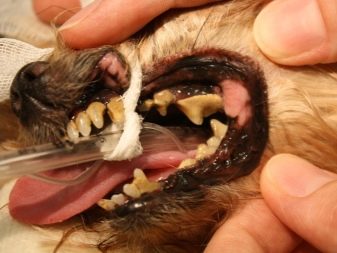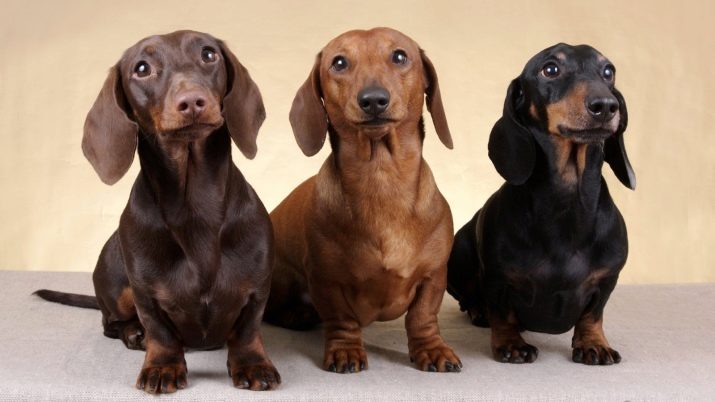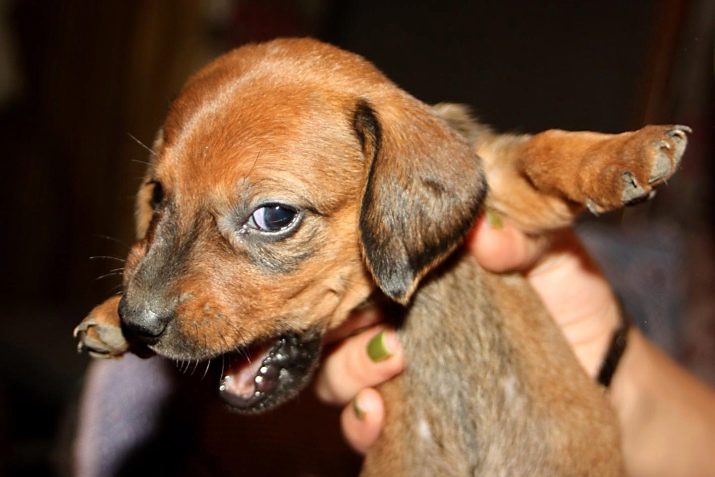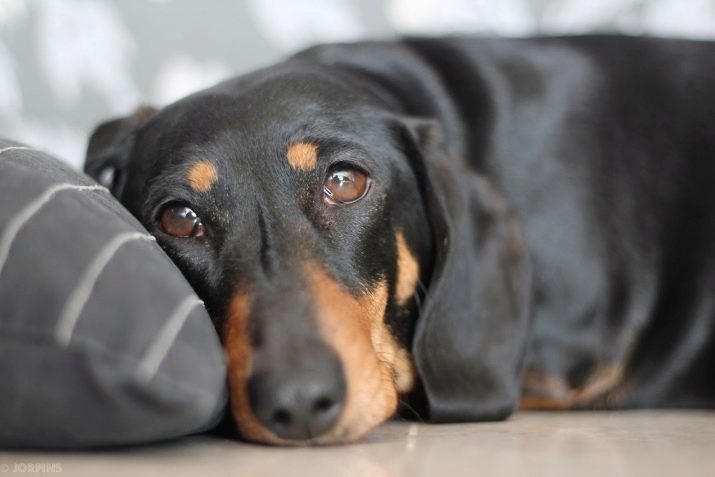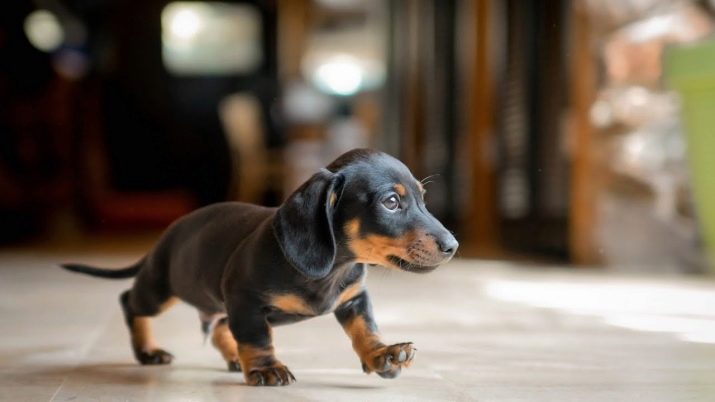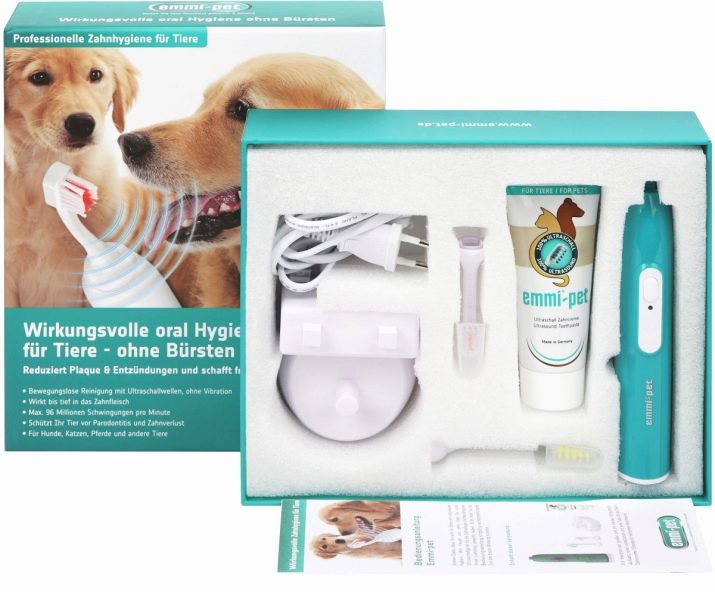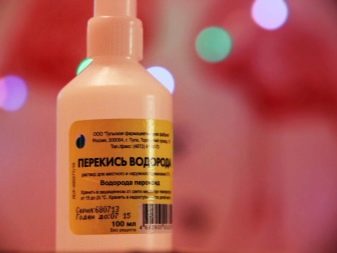Dachshund teeth: when they change in a puppy and how to care for them?
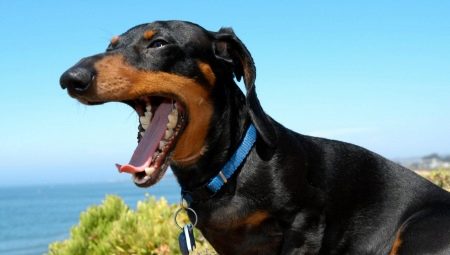
Miniature dachshunds are very popular among breeders. They attract with their bravery, devotion and beauty. For this breed a very important point is the care of the oral cavity. The condition of the teeth is directly related to the health of the pet as a whole and is reflected in appearance, appetite and emotional state.
Breed history
Dachshund is an excellent hunting dog. The breed was bred by the Germans in the 16th century. A miniature animal with short strong legs and an elongated body instantly won the respect of breeders. The dachshund, without fear, penetrated holes and chased foxes and badgers, which caused damage to farms, from garden plots. Over time, a four-legged friend attracted the attention of breeders from other European countries. Today, the fashion for dachshunds has not lost its relevance. The animal is adapted to live in apartment buildings.
Despite its diminutiveness, the dachshund is an excellent keeper and loyal friend.
Care
Nornaya dog quite unpretentious, but the question of oral hygiene is always very acute. Dachshund's teeth are large and hard. Their number is 42 pieces. The jaws are well developed, and the bite is scissor-like. Like any living creature, the dachshund is subject to various diseases, so the breeder must carefully monitor the condition of the animal's teeth: clean them regularly and show the pet to a specialist.
In modern pet stores, you can easily buy special brushes and pastes for four-legged friends.
When do teeth change?
Puppies are born toothless. The first teeth begin to come out two weeks after birth. They are still very fragile, as they have no roots. Change of milk teeth to permanent occurs in puppies at the age of 3 months. This process must be controlled, as there are problems with the loss of old and the growth of new teeth.
This situation can lead to unpleasant consequences.
Diseases
Attentive breeder immediately pay attention to the anxiety of the dog, which torments the toothache. In addition, several more symptoms signal the appearance of oral diseases in the pet. These include:
- increased salivation;
- lack of interest in food;
- bad breath.
Consider the most common ailments that dogs face:
- Stomatitis. It is characterized by inflammation of the mucous membrane of the mouth. It is a consequence of caries, as well as tartar. Signs of stomatitis are copious salivation in the animal. His tongue is covered with white bloom. Also, when stomatitis pet saliva exudes an unpleasant "flavor".
- Gingivitis. The disease affects the gums. It appears when the dog's oral hygiene rules are not followed. The owner ignores the brushing of the pet's teeth, as a result of which deposits are formed on them. They lead to the formation of abnormal bite.
- Periodontitis. The disease threatens the complete destruction of the canines of the four-legged friend. It is provoked by hard deposits on the teeth. The disease is not difficult to detect: the owner notices the dog's increased bleeding gums, signs of rotting fangs and a sharp unpleasant smell from the mouth. The teeth begin to loosen, and then fall out. The causes of periodontitis are hereditary predisposition or too soft food. The dog should chew or chew food thoroughly. This will help her grind down dental deposits.Treatment of this disease requires the intervention of a specialist.
If at a young age tooth loss in a dog is considered normal, then losing them in an adult pet should be alerted. First of all, the animal must be shown to the veterinarian.
In no case can one ignore these problems, as a pet suffering from such diseases will lose its appetite and die.
How to clean?
Taking care of the health of the dachshund is necessary from the first days of life. Naturally, plaque appears in puppies in smaller numbers than in mature dogs. However, monitoring the condition of the mouth of babies is necessary.
It can be reduced to daily inspection and removal of plaque.
Many breeders are inclined to believe that the teeth of pets should be cleaned as often as possible. Of course, it all depends on the individual characteristics of the animal. If a dog develops plaque quickly, then 1-2 cleanings per week is enough. In other cases, this procedure is carried out as needed (2-3 times per month). Clean the dachshund teeth immediately after feeding, paying attention to each tooth. Naturally, this process will be unpleasant for pets. As for cleaning products, in any pet store you can easily buy a special powder, gel or toothpaste to care for your dog's teeth.
Also included are brushes with soft bristles or devices that are worn on the finger.
Note that cleaning the teeth of a dachshund involves the use of folk remedies, as industrial products have a high cost.
So, for self-brushing dachshund, take the following items.
- Gauze. This tissue is known for its fibrous structure, which perfectly removes plaque from the teeth of the animal. Perfect gauze non-sterile bandage.
- Hydrogen peroxide (1%) or baking soda. In the first case, the gauze is moistened in the solution and gently rub the teeth of the pet. Using soda, the owner applies it on wet gauze and removes, thus, plaque.
There is an opinion that soda destroys tooth enamel, so its use should be minimized (no more than 1 time per week).
Undoubtedly, the process of cleaning the dachshund's teeth will make her nervous and struggling (especially when it comes to removing tartar). Therefore, a similar procedure is best done in conjunction with other households. If this possibility is not available, then pay attention to the following recommendations.
- Reassure the pet before cleaning. Play with him in your favorite game and caress.
- Put your four-legged friend in a comfortable position.
- Fix the dog's body with one hand, and with the other hand, carefully lift the upper lip and start brushing your teeth with a brush (up and down, in a circular motion).
- Similar actions are done with the lower teeth.
- After the procedure, massage the pet's gums with fingers.
- Do not forget to treat an animal favorite treat.
On how to care for your dog's teeth, see below.
